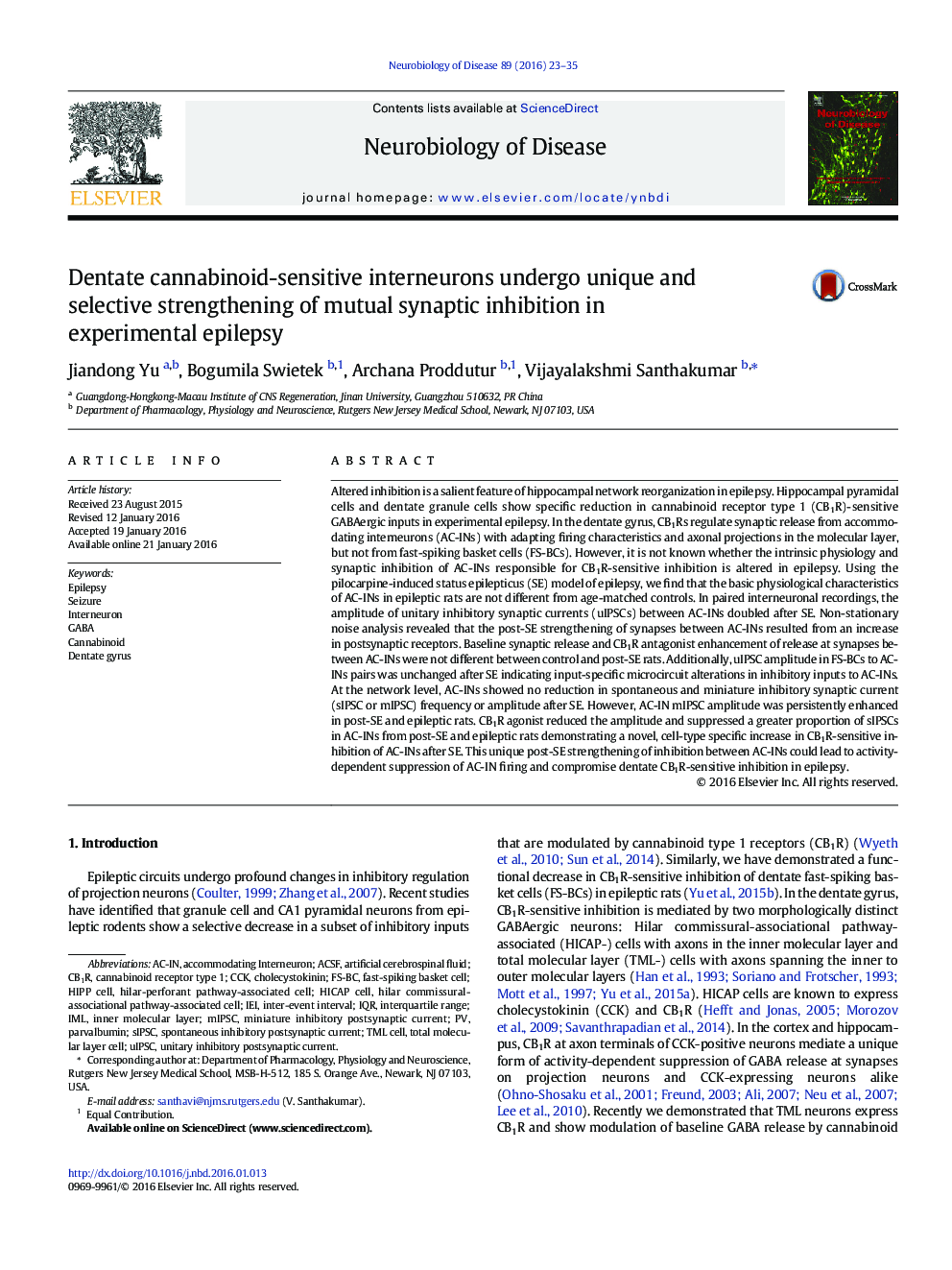| کد مقاله | کد نشریه | سال انتشار | مقاله انگلیسی | نسخه تمام متن |
|---|---|---|---|---|
| 6021408 | 1580634 | 2016 | 13 صفحه PDF | دانلود رایگان |

• Basic physiology of dentate accommodating interneurons is unaltered in epilepsy.
• Status epilepticus strengthens synapses between accommodating interneurons.
• Status epilepticus increases GABA receptors at synapses between AC-INs.
• Synaptic inhibition to accommodating interneurons is not reduced in epilepsy.
• Cannabinoid-sensitive inhibition of AC-INs is increased in epilepsy.
Altered inhibition is a salient feature of hippocampal network reorganization in epilepsy. Hippocampal pyramidal cells and dentate granule cells show specific reduction in cannabinoid receptor type 1 (CB1R)-sensitive GABAergic inputs in experimental epilepsy. In the dentate gyrus, CB1Rs regulate synaptic release from accommodating interneurons (AC-INs) with adapting firing characteristics and axonal projections in the molecular layer, but not from fast-spiking basket cells (FS-BCs). However, it is not known whether the intrinsic physiology and synaptic inhibition of AC-INs responsible for CB1R-sensitive inhibition is altered in epilepsy. Using the pilocarpine-induced status epilepticus (SE) model of epilepsy, we find that the basic physiological characteristics of AC-INs in epileptic rats are not different from age-matched controls. In paired interneuronal recordings, the amplitude of unitary inhibitory synaptic currents (uIPSCs) between AC-INs doubled after SE. Non-stationary noise analysis revealed that the post-SE strengthening of synapses between AC-INs resulted from an increase in postsynaptic receptors. Baseline synaptic release and CB1R antagonist enhancement of release at synapses between AC-INs were not different between control and post-SE rats. Additionally, uIPSC amplitude in FS-BCs to AC-INs pairs was unchanged after SE indicating input-specific microcircuit alterations in inhibitory inputs to AC-INs. At the network level, AC-INs showed no reduction in spontaneous and miniature inhibitory synaptic current (sIPSC or mIPSC) frequency or amplitude after SE. However, AC-IN mIPSC amplitude was persistently enhanced in post-SE and epileptic rats. CB1R agonist reduced the amplitude and suppressed a greater proportion of sIPSCs in AC-INs from post-SE and epileptic rats demonstrating a novel, cell-type specific increase in CB1R-sensitive inhibition of AC-INs after SE. This unique post-SE strengthening of inhibition between AC-INs could lead to activity-dependent suppression of AC-IN firing and compromise dentate CB1R-sensitive inhibition in epilepsy.
Journal: Neurobiology of Disease - Volume 89, May 2016, Pages 23–35